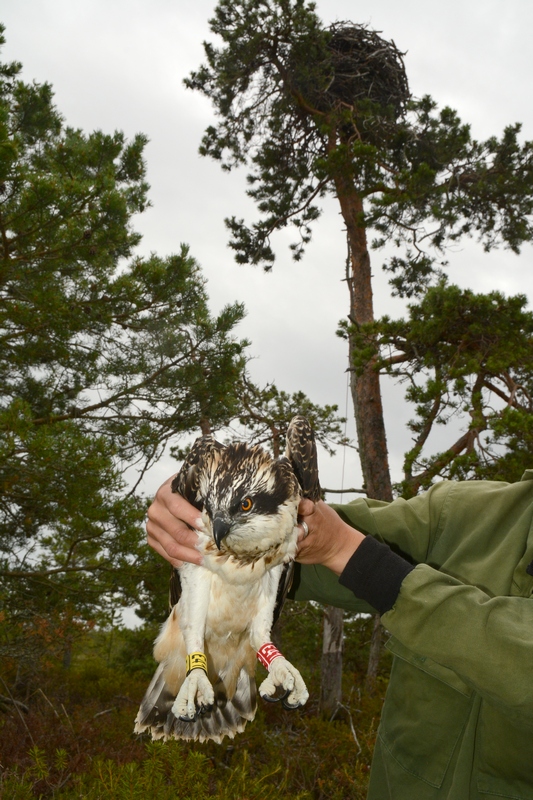
Figure 1. Ringing of YE41RE41 at Onezhskoe Lake, Russia. Photo by Miroslav Babushkin.
Western Ospreys Pandion haliaetus are Palearctic migrants that breed in the northern hemisphere and over-winter predominantly in West Africa, and to a lesser extent, in southern Africa (Kjellen et al., 1997, Hake et al., 2001). Each year large numbers of Osprey chicks are ringed by European, Scandinavian and Russian ringing schemes. Over 15 000 chicks since 1995 in Sweden alone (Hake et al., 2001), yet resightings of ringed individuals are rare in their overwintering grounds. For example, only 29 ringed individuals have been reported to the South African Bird Ringing Scheme (SAFRING) since 1972 (SAFRING database accessed on 5th of May 2017) from around Africa. A number of traits contribute to these poor ‘recapture’ rates: Ospreys are considered ‘broad-front migrants’ (Osterlof 1977) meaning that they tend not to migrate in concentrated groups, which means that individuals can easily be over-looked. They travel rapidly and tend not to strictly follow thermal conditions (Kjellen et al., 1997) and some individuals appear to prefer travelling at night (Vali and Sellis, 2016).
Although little is known, the few studies that have explored migratory behaviour have made interesting discoveries. Ospreys travel fast, averaging 270km per day (Kjellen et al., 1997) with a maximum of 763km reported by Vali and Sellis (2016). GPS-tagged Estonian females left breeding grounds late July to mid-August, leaving males to finish rearing chicks, and return journeys starting from late February-mid March (Vali and Sellis 2016). The authors also showed that individuals were relatively faithful to their overwintering sites but that the location of sites varied a lot between individuals. Their conclusions were based on four radio-tagged Estonian Ospreys over approximately six migration seasons. Hake et al. (2001) provided further insight into the movement of 13 Ospreys: adults showed high site fidelity and tend to stay within 10km from a central spot (Prevost 1982; Hake et al., 2001) whilst juveniles roamed wider. Hake et al. (2001) suggested that juvenile roaming could be the result of the best sites having been selected by adults. Potentially, the low migration densities and inconsistent use of thermals could result from a need to reduce foraging competition caused by their almost exclusively piscivorous diet (Kjellen et al., 1997).
Recently, a resighting was reported to SAFRING of a Russian Osprey. This young bird was first ringed as a juvenile on the 11th of July 2015. Subsequently it had been seen in South Africa in the West Coast National Park 33°07’48.0”S 18°05’24.0”E on the 13th of February 2016 by Michael Buckham and Rooisand Nature Reserve, Kleinmond 34°21’35.4”S 19°05’40.5”E on the 30th of April 2017 by Carin Malan. It is the first Russian individual to be recorded in South Africa. Two colour rings: yellow E41 on the right leg and red E41 on the left leg allowed for confident positive identification of the individual (http://safring.adu.org.za/ring_info.php?ring=YE41RE41&project=FOREIGN_RUP). Originally ringed the vicinity of Onezhskoe Lake in the Vologda region this individual would have travelled at least 10 500 km in one direction this year alone. There was a second unringed individual in the vicinity. It is interesting that both sightings were in protected areas and in localities that are relatively far apart (approximately 200km). This supports a previous suggestion that juveniles need a couple of seasons to select a site (Hake et al., 2001), either as a result of inexperience or because of competition with adults.
Figure 2. YE41RE41 at Rooisand Nature Reserve, South Africa. Photo by Carin Malan.
These were exciting records for South Africa and hopefully the first of many more which will hopefully lead to a better understanding of migratory dynamics in this species. .
References:
Hake, M., Kjellén, N. & Alerstam, T. 2001, "Satellite Tracking of Swedish Ospreys Pandion haliaetus: Autumn Migration Routes and Orientation", Journal of Avian Biology, vol. 32, no. 1, pp. 47-56.
Kjellen N, Hake M, Alerstam T 1997. Strategies of two Osprey Pandion haliaetus migrating between Sweden and tropical Africa as revealed by satellite tracking. Journal of Avian Biology 28(1): 15-23.
Österlöf, S. 1977, "Migration, Wintering Areas, and Site Tenacity of the European Osprey Pandion h. haliaetus (L.)", Ornis Scandinavica (Scandinavian Journal of Ornithology), vol. 8, no. 1, pp. 61-78.
Prevost, Y.A. 1982, Wintering ecology of ospreys in Senegambia, PhD edn, The University of Edinburgh.
Vali, U. & Sellis, U. 2016, "Migration patterns of the Osprey Pandion haliaetus on the Eastern European-East African flyway.” Ostrich, vol. 87, no. 1, pp. 23-28.